A couple of months ago I started clearing some stuff out through my e-bay account, including a collection of French Adverts from a magazine called Connaissance des arts.
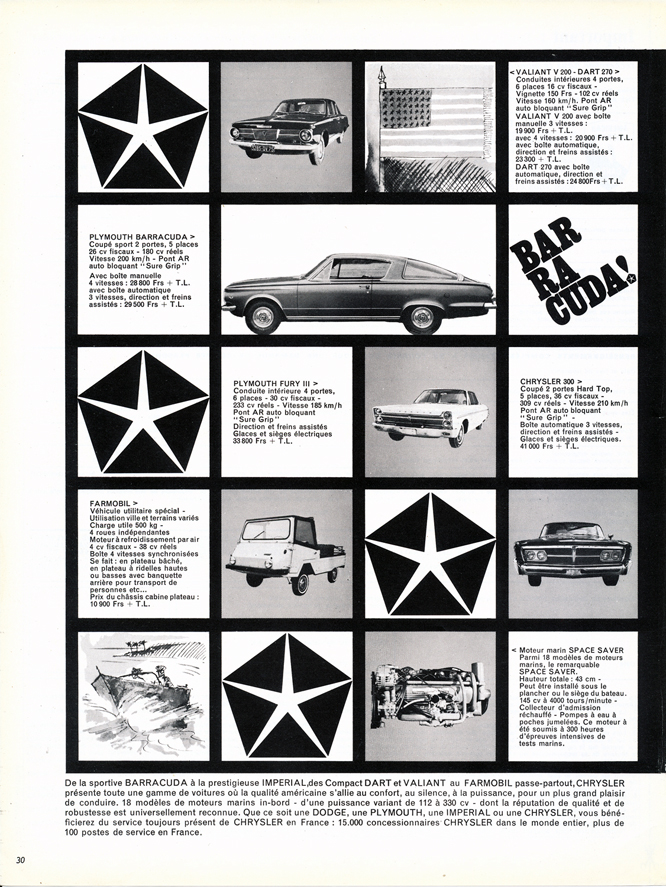
One item that really triggered my curiosity was featured on the undated Chrysler ad above was the cute l’il utility vehicle referred to as the Farmobil below.
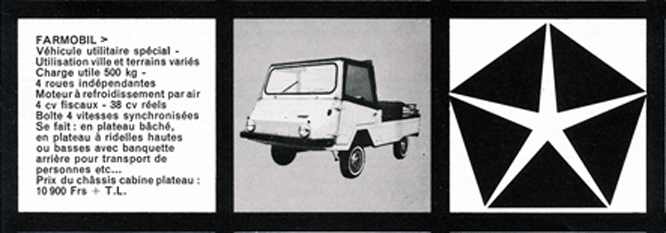
Last thing I imagined was that this item would sell to a Farmobil owner…. living in Perth Australia !
Mark Bird owner of today’s featured Farmobil kindly sent me some photo’s of his vehicle and some information about it to share.
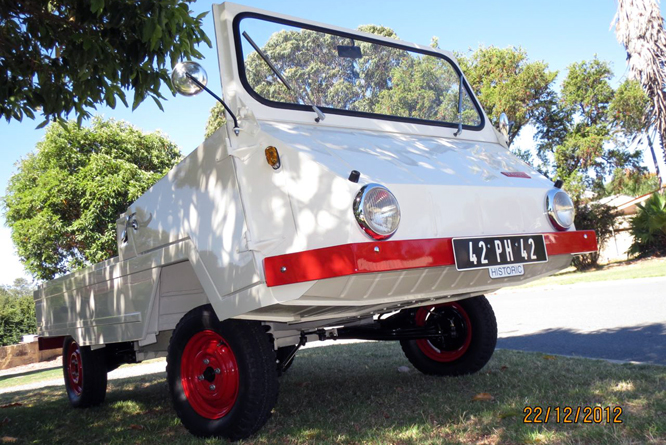
The Farmobil story begins in a small town on the southern border of Germany with Switzerland in Gottmadingen where the former Fahr factory occupied 4,000 employees in the production of agricultural machinery and equipment with metal castings a speciality.
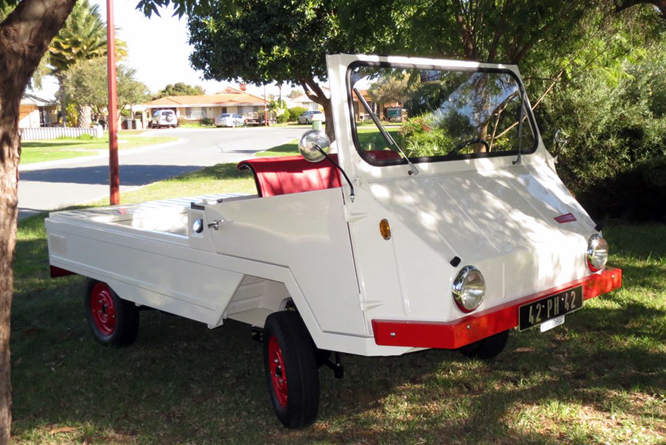
One of the products they designed in co operation with BMW is the Farmobil a light utility truck with all round independent suspension and a drive train including, 4 speed synchromesh gearbox, 2 cylinder BMW 700 cc / 42.7 cui motor, stick shift, brakes and wheels lifted more or less straight out of a BMW 700 LS.
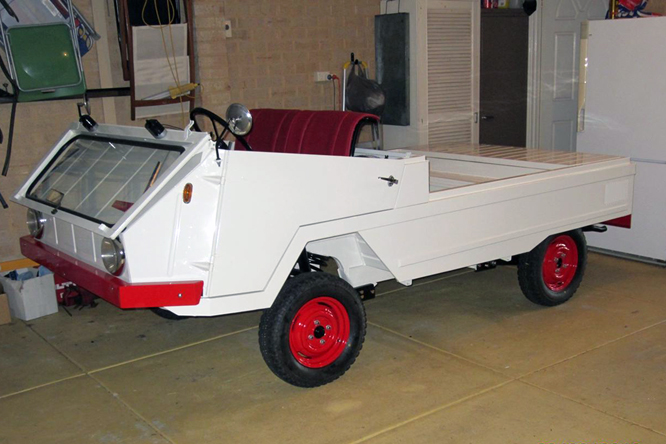
To maximise flexibility the windscreen could be folded down and the doors removed and for inclement weather the Farmobil was provided with a canvass roof, it had a power take off for farm implements and could even be converted into a six seat passenger vehicle.

The 32 hp air cooled horizontally opposed motor was originally developed for BMW motorcycles, but this is not the same single cylinder unit as used in the BMW Isetta bubble car or R60 flat twin as used in the BMW 600 Bubble Car.
Assembley of Farmobils was put out to tender which was won by Greek low volume manufacturer Peter Kondorgouris who founded Farco to build the Farmobil in Thessalonika, Greece, from 1962 to 1966.
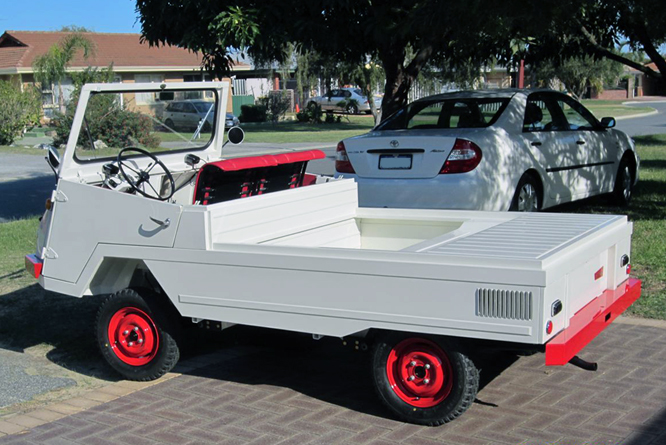
During this time Chrysler was looking for away into the European markets and acquired Farco as a first step towards establishing a European base. However shortly after the acquisition Ford sold it’s share in the French Simca concern and Chrysler bought it giving them an entrance into the French and German markets while the Farmobil manufactured in Greece, outside the European Economic Union (EEC) at the time, attracted prohibitive taxes.
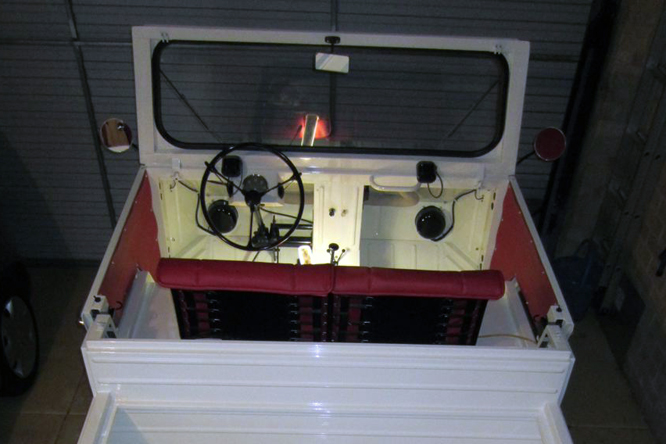
In Greece, where the Farmobil was never officially distributed, it was known as the ‘motorised goat’. Chrysler distributed it through it’s network within the EEC however by 1966 production came to an end after efforts to move production to Rotterdam, and the UK where two vehicles fitted with Hillman Imp motors from the Rootes Group, soon to become part of the Chrysler empire all failed to secure a future for the versatile machine of which just under 1000 were built between 1962 and 1966.
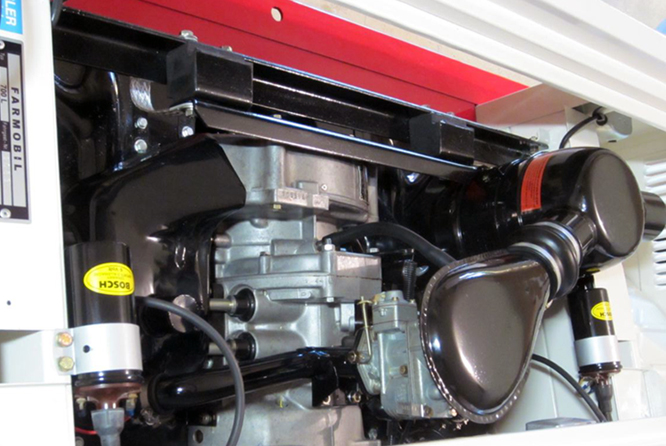
Mark, a member of the “Special Interest Vehicle Association” (SIVA) found his 1966 example needing a full restoration in France in 1999 and took it back to Australia where he spent 12 years locating all the correct parts to restore it back to the as new showroom condition seen here.
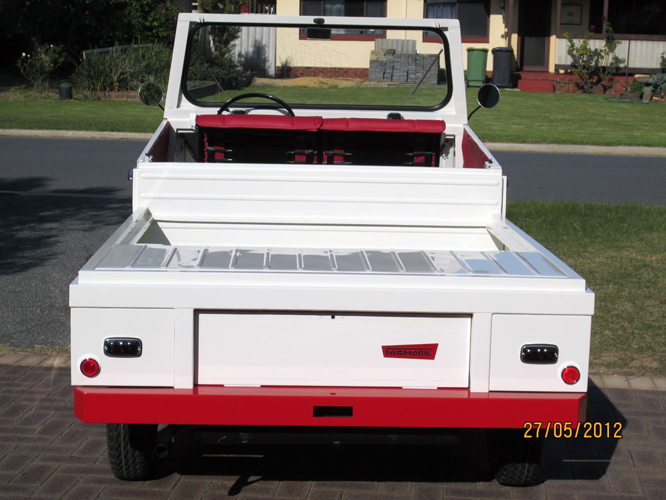
He says that “It is a completely unknown vehicle in Australia so it’s a bit difficult to share it with others” outside the the Special Interest Vehicles Association whose members own a diverse range of vehicles including Hino Contessa, Messerschmitt KR 200 & 201, NSU Prinz and Ro80, Autobianchi Bianchina, Trojan 200, Nissan S-Cargo, Honda s600″s , Coupe 7″s & 9″s as well as N360 and TN360 to name a few.
My thanks to Mark for sharing today’s photographs of his stout little Farmobile about which he contributed to a fuller description which can be seen on the allpar.com website linked here.
Thanks for joining me on this “Mechanised Goat” edition of “Gettin’ a li’l psycho on tyres” I hope you’ll join me again tomorrow for a few of the many stories behind the oldest Bugatti in Britain. Don’t forget to come back now !
18/02/14 Errata in the original post of this blog I incorrectly spelled Farmobil, it has no ‘e’ and stated; that the Farmobil’s transmission was a Porsche design which it was not, that the motor was shared with the BMW Isetta Bubble car which was also incorrect.
Apologies for the confusion and thanks to Mark Bird for pointing out the inaccuracies. Mark also tells me that the Farmobil is not to be confused with the similar but completely unrelated Steyer Puch Haflinger made in Austria.

